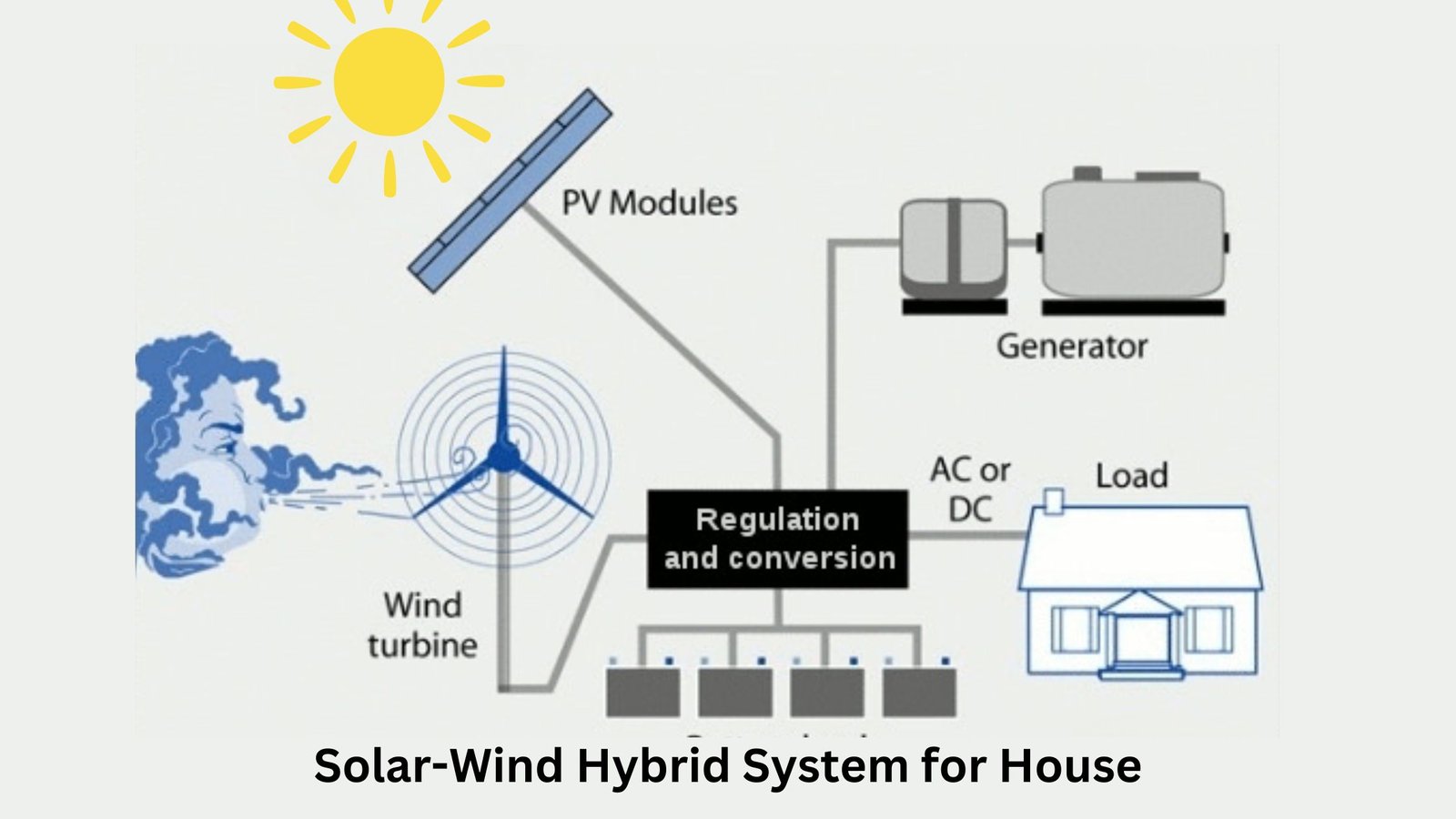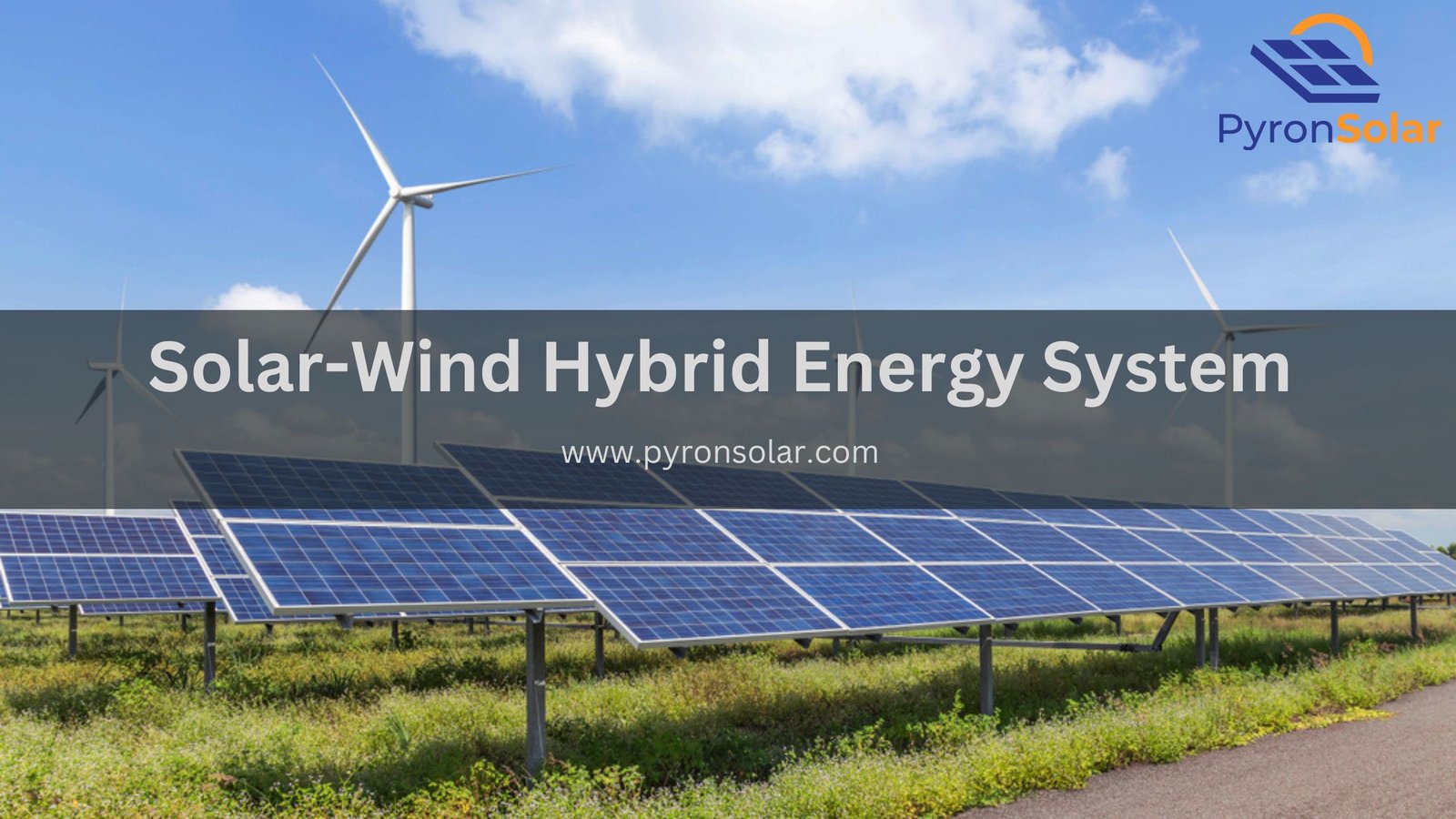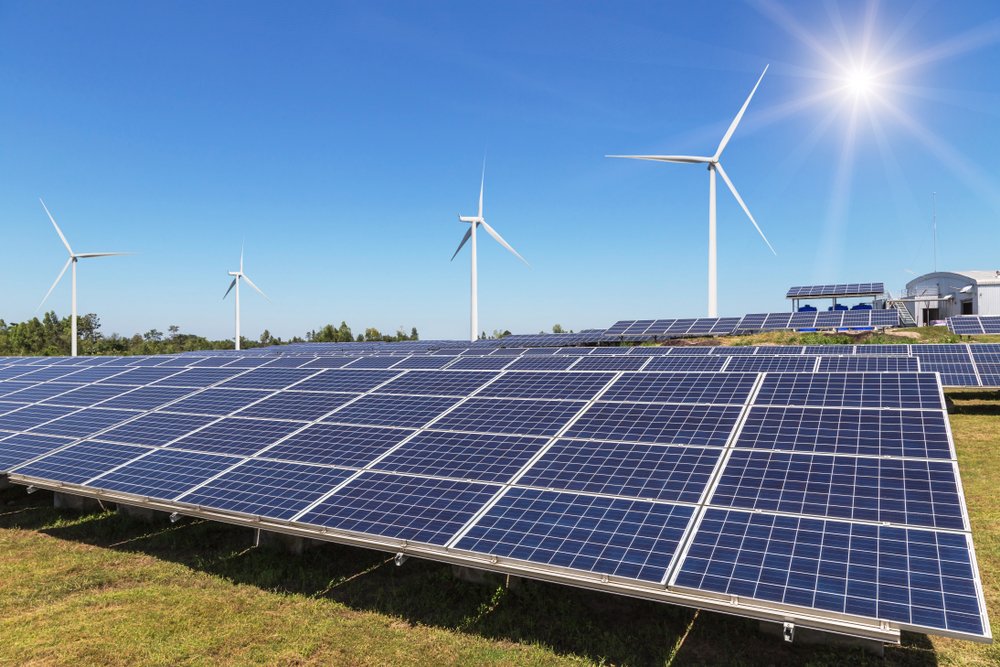The combination of renewable energy like sun and wind that is used for producing electricity through a combined system of solar panels and small wind turbine generators is known as the solar-wind hybrid system.
If you’re planning to go off-grid, this hybrid system allows you to produce energy 24/7, thereby decreasing the battery system size to power your home during the night. The main advantage of using a solar-wind hybrid system is that during sunny days, the energy is collected using solar panels and harnessed wind energy during night hours. Especially, in areas where sun and wind are abundant, you will be able to achieve zero-carbon emissions or net-positive that should help to produce more energy than your household appliances consume.
You can easily understand how a solar-wind hybrid system works by knowing its advantages and disadvantages, as well as its daily applications so that you can plan for your purchase according to your budget and needs.
How does the Solar-Wind Hybrid System work?

The solar panels and windmills are commonly connected to a large battery bank that joins as a regulation and conversion unit. The battery bank stores the produced energy that can be later transferred to the load in the powerhouse for distribution.
By integrating energy storage with a hybrid system, the overall reliability and grid integration of renewable energy installations can be significantly improved. Also, the power fluctuations can be reduced by increasing the system’s flexibility, thereby dispatching and storing electrical energy generated by renewable energy sources like solar and wind. However, you should also know which is better solar or wind energy.
These four types of batteries or energy storage systems are mainly used in Solar Wind Hybrid systems such as:
1. Electrochemical energy storage includes batteries, fuel cells to store hydrogen and a flow battery to increase the retention capacity.
2. Mechanical energy storage includes pump-based hydroelectric energy storage — equipped with a photovoltaic (PV) system array, wind turbine and energy storage system. Compressed air energy storage (CAES) — to store compressed air in underground reservoirs and discharge it to develop energy during peak demand periods. A flywheel energy storage— conserves kinetic energy in a rotating flywheel.
3. Electrical energy storage includes supercapacitor energy storage (SES)— which utilizes electrostatic fields to store energy with high power output. Superconducting magnetic energy storage (SMES) — uses the magnetic field developed inside a superconducting coil to collect electrical energy. Thermal energy storage (TES)— contains long-duration storage with lower power output.
4. A hybrid or Multi Storage system is obtained by combining two or more technologies like integrating batteries with pumped hydroelectric storage or supercapacitors and thermal energy storage
Advantages of Solar-Wind Hybrid System
Here are the several benefits of solar-wind hybrid systems you need to know:
- Increased Energy Generation: Compared to the individual performance of wind and solar energy systems, solar-wind hybrid technologies can increase energy generation twice.
- Stable Power Source and Energy Independent: These systems can provide continuous power supply without interruption and during power outages these batteries act as inverters to provide backup for your homes, thereby increasing energy independence in remote and urban locations.
- Cost Effectiveness: The overall installation cost of a solar wind hybrid technology is less than any individual system, which is effective in increasing your savings. To explain in simpler terms, the hybrid system’s project cost can be minimized by 2% to 2.5% of the total project cost of an individual solar or wind system.
- Environmental Benefits: The dependence on fossil fuels is reduced, which can help to diminish greenhouse gas emissions and minimize climate change. Most importantly, the carbon footprint is reduced associated with electrical energy, which motivates to maximize energy production.
{Video Credit – Renewed Energy}
Disadvantages of Solar-Wind Hybrid System
Although solar-wind hybrid systems are beneficial, they also come with some disadvantages that must be considered:
- High Installation Cost: The solar-wind hybrid system installations are quite expensive. This system setup cost will vary based on the technology used. However, it usually ranges from $20,000 to hundred thousand dollars for residential and commercial setups.
- Maintenance Cost: It is important to ensure regular maintenance for the system to function efficiently. Maintenance includes solar panel cleaning and wind turbine servicing. Wind turbines lead to higher costs throughout their lifespan as compared to solar panels, which remarkably have low maintenance requirements.
- Noise Pollution: A wind turbine produces noise when its blades are cutting through the air with a sound level of around 35 to 45 decibels at 350 meters, which is roughly comparable to the noise level in a quiet suburb. However, at a close distance, the noise can be more noticeable and disturbing.
- Space Requirements: Solar panels and wind turbines require significant space. The land area needed for a wind turbine may be as much as half an acre or more per turbine. Solar panels also require substantial space for installation, though they can be mounted on rooftops, mitigating this issue to some extent.
Applications of Solar-Wind Hybrid System
The flexible and adaptable nature of solar-wind hybrid systems makes them usable in a wide range of applications, such as:
- Residential Applications: Homeowners will be able to use solar wind hybrid systems to provide power to their residences. Also, they can save money on electricity bills by lowering their dependency on the grid.
- Commercial Applications: Larger solar wind hybrid systems can be installed in Businesses to cover a massive amount of their energy requirements, reduce their environmental impact, and further improve their brand reputation.
- Industrial Applications: Solar-wind hybrids can be advantageous to many factories and businesses. Also, manufacturing facilities with higher energy demands can make use of the capability to generate massive electrical power to carry out their operations.
In the United States of America, a notable case study is the Taos, New Mexico, a community which makes use of a solar-wind hybrid system to meet its energy needs as well as being ecologically and socio-economically conscious.
Should You Get a Solar-Wind Hybrid System
Before you decide to install a solar-wind hybrid system, you need to consider these factors:
- Energy Needs: Conducting an energy audit is very important to understand your energy consumption cycle, and you can determine whether a hybrid system is capable of meeting your requirements.
- Geographical Location: The efficiency of these solar wind hybrid systems usually varies depending on the location, with regions receiving plenty of sunlight and steady wind patterns being suitable.
- Cost-Benefit Analysis: Despite initial costs being higher, you will have many long-term advantages that include — reducing your electricity bills, energy independence, and net metering (selling excess power back to the grid) can help to minimize the expenses.
- Government Incentives: The Incentives and rebates offered by the government can remarkably improve the return on investment (ROI) for these solar wind hybrid systems.
- Local Regulations and Permits: Local regulations impact the possible benefits of installing solar wind hybrid systems. Also, it is important to consider checking zoning laws and permits in the early planning process.
- Technological Compatibility: These solar wind hybrid systems are compatible with the existing infrastructure of homes or businesses, by delivering a consistent and continuous power supply.
- Maintenance and Durability: Usually, Solar panels have a lifespan of 25 to 30 years under normal maintenance. Whereas, while wind turbines last up to 20 to 25 years, they need much more frequent servicing.
Therefore, a solar-wind hybrid system is suitable for those who have the space and budget capacity to invest in renewable energy. Also, those who live in areas under favourable weather conditions (Applicable to both – solar and wind energy). As a result, these solar wind hybrid systems deliver long-term advantages and lead to environmental conservation benefits.
Ray is an avid reader and writer with over 25 years of experience serving various domestic and multinational private and public energy companies in the USA.


